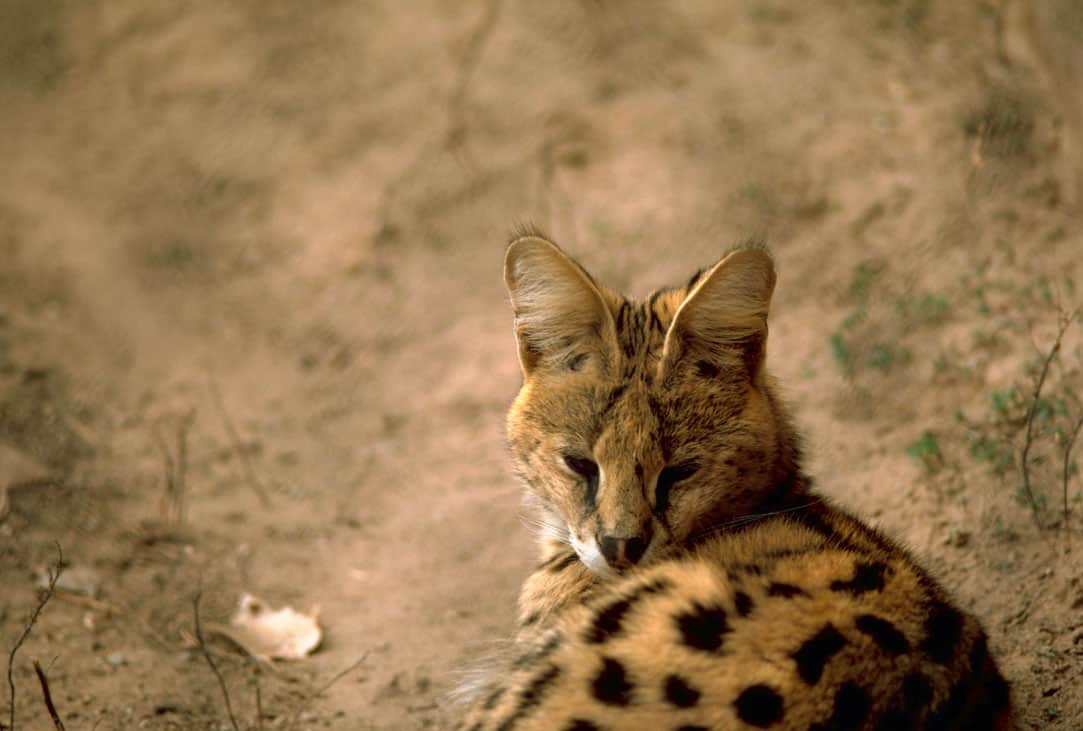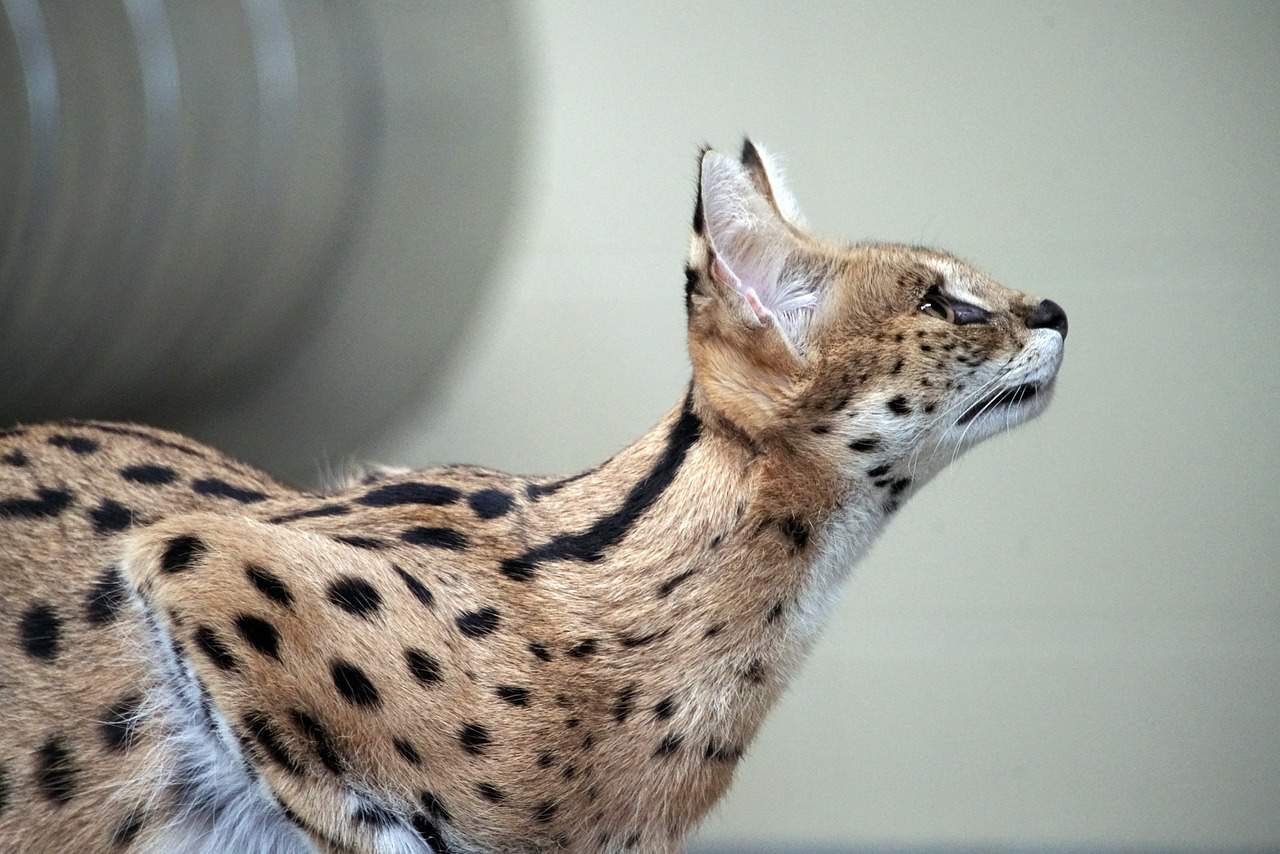Spotting a shark at a beach is shocking but still expected, but it’s no wonder that this serval cat spotted at a North Carolina beach took its fellow beach-goers by surprise. What would you do in this situation? Maybe try and pet it, or run in the opposite direction?
Unusual Sight at the Beach

Many eyebrows and questions were raised at a North Carolina beach when a serval cat was spotted roaming the sandy shores. Beachgoers were startled and intrigued by the presence of this exotic African wild cat, which is definitely not native to the area.
Luckily, It Was On a Leash

The serval cat in question was on a leash and was simply going on an exploring walk with its owner. Without a leash, it would’ve undoubtedly caused panic and alarm. However, this was not a serval cat that had escaped a local zoo, but rather a woman’s exotic pet.
Owner Still Suggests Onlookers to Keep Their Distance

Although this not-so-wild cat is domesticated, and many are probably curious to get a closer look, its owner still suggests keeping a safe distance. She underlines that they are not attack-animals and typically retreat in the face of danger, but that they still need their space to not be intruded.
A Real Mama’s Boy

The serval cat, who goes by the name of Keenai, is apparently a real mama’s boy. Its owner, Mia Smith, admits that she was hesitant at keeping a serval as a pet at first, but has now completely fallen in love with the species’ personality.
An Expensive Pet to Keep

Although Mia is rewarded with immeasurable amounts of love, keeping a serval cat is not a cheap lifestyle. She bought him for $5,000 and now spends roughly $100 a week to feed him properly with the things he needs to stay healthy (aka lots and lots of meat.)
Understanding the Serval Cat

The serval is a medium-sized wild cat native to Africa, known for its distinctive spotted coat and long legs. These cats are typically found in savannas and wetlands, where they hunt for small prey.
Characteristics of Servals

Jolijn Rosendaal via Pexels
Servals have a unique appearance, with large ears and a slender body. They can weigh between 20 to 40 pounds and measure up to 3 feet in length.
Servals as Exotic Pets

Owning a serval as a pet has become increasingly popular, though it is controversial. These wild cats require specialized care and a suitable environment to thrive. Prospective owners must understand the significant commitment involved in keeping a serval healthy and happy.
Legal Aspects of Owning a Serval

The legality of owning a serval varies by region. In some places, permits and licenses are required, while in others, ownership is strictly prohibited. Potential owners must research local regulations to ensure they are compliant with the law when considering an exotic pet.
Challenges of Keeping a Serval

Caring for a serval is challenging due to their wild nature and specific needs. They require a large, secure enclosure and a diet that mimics their natural food sources. Behavioral issues can arise if their needs are not met, making them unsuitable for most households.
The Debate on Exotic Pets

The incident at the North Carolina beach has reignited the debate on the ethics of keeping exotic pets. Critics argue that wild animals should remain in their natural habitats, while supporters claim that with proper care, some exotic pets can live fulfilling lives in captivity.
Safety Concerns for the Public

Public safety is a primary concern when exotic animals, like servals, are kept as pets. Even if well-trained, wild animals can exhibit unpredictable behavior. Ensuring that these animals are securely housed and managed is crucial to prevent accidents and injuries.
Conservation Efforts for Servals

Conservation efforts are essential to protect serval populations in the wild. Habitat loss and human encroachment pose significant threats to these cats. Supporting conservation programs helps to preserve their natural habitats and promote biodiversity.
Servals’ Super Hearing Ability

Servals possess exceptionally large ears, which provide them with a super hearing ability. They can detect the faintest sounds made by their prey moving underground. This heightened sense allows them to be successful hunters in their natural habitats, where stealth and precision are crucial for survival.
Incredible Leaping Skills

Servals are known for their remarkable leaping skills. They can jump up to 10 feet in the air to catch birds in flight. This extraordinary ability makes them one of the best jumpers among all cat species, allowing them to surprise their prey from a significant distance.
Unique Hunting Techniques

Servals employ unique hunting techniques that set them apart from other wild cats. They use their long legs to reach into burrows and flush out hidden prey. This method, combined with their incredible pouncing accuracy, makes them highly effective predators in the African savannas.
Long Legs for Swift Movement

The serval’s long legs are not just for show; they provide the cat with exceptional speed and agility. These legs enable the serval to run swiftly, making sudden turns and leaps to catch agile prey. This physical adaptation is essential for surviving in the wild.
Nighttime Predators

Servals are primarily nocturnal hunters, taking advantage of the cover of darkness to stalk their prey. Their excellent night vision, coupled with their stealthy movements, makes them formidable predators during nighttime. This nocturnal lifestyle helps them avoid larger predators and human interactions.
Diverse Diet of a Serval

Servals have a diverse diet that includes rodents, birds, frogs, and insects. This varied diet helps them adapt to different environments and ensures they can find food even when certain prey populations are low. Their flexible eating habits contribute to their survival in the wild.
Serval Cat at North Carolina Beach: Conclusion

Beach-goers who witnessed this unusual sight were probably equal parts scared and curious. It raises the many controversial questions about keeping exotic animals as pets – they seemingly get along well with their owners but how tame can a wild animal really become? What do you think?
Thank you for reading this article about the serval cat spotted at a North Carolina beach! For more big cats and felines, take a look here:
- Extremely Loving and Patient Serval Cat Plays with Human Baby
- Bodybuilder Plays Tug of War with Mighty Lion
- Watch: Maasai Warrior Chases Huge Lion for Eating His Cow
Join our Forum for free today!

- Exotic Serval Cat Spotted Walking at North Carolina Beach Raises Eyebrows - June 27, 2024
- Snowmobilers Close Encounter With Bear in Russia - June 27, 2024
- Dog Brings Home New Raccoon Bestie - June 27, 2024

